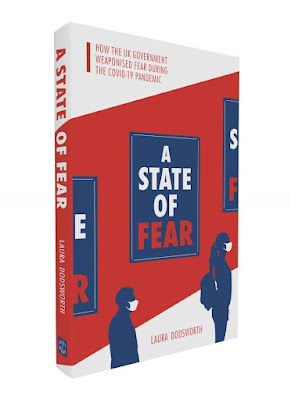Last month, Wetherspoon’s announced that they were
removing steaks, gammon and mixed grills from their menu. This resulted in a predictable outbreak of grumbling, but it’s the only the latest example of a long record of
discontinuing supposedly popular menu items. One of the most notorious was dropping Sunday roasts in 2016. Later they discontinued traditional Christmas turkey dinners. It is another example of the company taking a somewhat ruthless attitude to revamping their offer to increase their profitability. They must have decided that steaks were a declining market and required too much time and effort in the kitchen.
This month, the pub trade will experience a massive increase in costs, with swingeing hikes in national insurance and business rates, and a rise in the minimum wage well above inflation. The stagnant general economic climate means that customers don’t have the money for large price increases. The inevitable result is that pubs will struggle, and a fair number will end up closing. But it’s a good bet that Wetherspoon’s, while they will experience the same pressures, will manage to weather the storm.
The first pint I ever bought in a pub cost me 21p in 1976. The Bank of England’s official inflation calculator* reckons that the current equivalent price would be £1.39. But, in reality, a similar pint in a pub around here today would cost at least £4, almost three times as much.
It’s often not recognised that buying a pint of beer in a pub is primarily buying a service, not simply a physical product. The wages of the staff and the overheads of the premises also have to be taken into account. Over time, as real wages increase, while manufacturing efficiencies reduce the price of physical products, the price of services rises vis-à-vis that of goods.
It is generally acknowledged that the price elasticity of a pint a beer in a pub is well below 1. If you increase the price by 10%, you will lose some sales, but almost certainly well below 10%. So, over time, it has always been tempting for the pub industry in general, in response to higher costs, to increase prices by just a little bit above the prevailing rate of inflation. They lose a bit of sales volume, but protect their margins.
This makes sense in the short term, and I do not blame any pub operator or individual publican for doing it. But it has a cumulative effect, and suddenly you realise that a pint is twice as much in real terms as it used to be, and increasingly unaffordable for many people. To try to break this vicious circle, Wetherspoon’s have ended up reinventing the pub model from the ground up. The fundamental point is that the underlying cost assumptions of the pub trade should not be taken as fixed.
This wasn’t something that was in place from the beginning. Tim Martin started out by converting former shops to offer something that most London pubs at the time didn’t – cask beer, food service, consistent opening hours and a comfortable, welcoming, unthreatening environment. In the early days, they weren’t markedly cheap compared with the competition. It wasn’t until the mid-90s that they started expanding outside their initial South-East base – the Moon Under Water in Manchester city centre opened in August 1995.
But it is an approach that has evolved over time. Every aspect of the pub cost base has been challenged in the quest to make a lower margin viable. A key aspect of this is the “pile it high, sell it cheap” approach. Wetherspoon pubs are markedly larger than the average, so the overheads are spread over a larger sales base. Over time, they have disposed of many of the smaller premises acquired earlier in their history. They may make less profit for pint, but they make more in total.
As the largest single on-trade purchaser of alcoholic drinks, beer in particular, they are in a position to drive a hard bargain with suppliers. Over the years, they have had several high-profile disputes with suppliers over costs, most notably ditching virtually all Heineken brands three years ago. While some micro-breweries have a long-term relationship with them, they are trading margin for security, and others won’t deal with them because they don’t find the prices they are willing to pay acceptable.
As I mentioned with the menu changes, all aspects of the operation are constantly reviewed to maximise efficiency and drive out costs. The idea that the popular Wetherspoon App does this may seem counter-intuitive, as it introduces table service for drinks, but in fact it automates the ordering process and makes managing workflow much easier, this smoothing out the peaks and troughs. They also constantly review their property portfolio to weed out poorer-performing branches and eliminate expensive leases. If an apparently busy Wetherspoon pub is unexpectedly disposed of, it’s probably because the lease cost was deemed excessive.
The pricing is finely tuned between different locations, often in a seemingly perverse way. In particularl, they charge a substantial premium in the centres of larger cities, where they have a more captive and less cost-conscious market. They are also often not quite as cheap as people imagine. Pretty much everything on the drinks menu is priced below the nearby competition, but the differential on cask beer is greater than that on kegs and lagers because that is the figure most often used to make price comparisons.
They have also tried to eliminate many of the aspects that make pubs unattractive to customers. Most of their premises are conversions from other type of business rather than former pubs, and where they have acquired existing pubs they have typically totally remodelled the interior. They are largely open-plan without nooks and crannies, and have a large windows on the street so you can see in from outside. There is never a fear of going in the wrong side.
They, in general, avoid features such as live and piped music and TV sport, which do appeal to some but on the other hand can be seen as divisive. People are never going to say “I don’t want to meet up at Spoons because of X” – in a sense they are a kind of lowest common denominator pub. Food and drink menus are put out on all tables so you know exactly what is available and how much it will cost. They also open, and serve food during, long and predictable hours, so that potential customers have the confidence they can go there without worrying about unexpectedly finding it closed. The whole process of a pub visit is made as painless and risk-free as possible.
The overall result of this is that their premises can often come across as large, impersonal and soulless. They lack the intimacy and character often associated with traditional pubs. While they often occupy architecturally impressive buildings, they fill them with cheap, generic loose furniture. You rarely feel cosy in Wetherspoon’s, and I suspect there is an unspoken objective to prevent customers feeling too settled and minimise dwell time.
Cask beer is a key aspect of their appeal, and their association with CAMRA in the form of discount vouchers gives them valuable low-cost publicity. But the standards of cellarmanship vary widely – some branches are consistently good, others much less so – and all too often the beer, even if in decent nick, gives the impression of having been drawn through a very long pipe. They also have a knack of having eight or ten handpumps on the bar but still offering an oddly unbalanced range.
Wetherspoon’s are often accused of having an exploitative attitude towards their staff, but this largely comes across as an exercise in sour grapes. They offer conditions equal to or better than other major players in the market, and have all the benefits and well-developed human resources policies you would expect from a large company. They also offer the opportunity of career progression from an entry-level job, which is not the case for someone doing bar work in an independent pub. The staff are kept busy, but they often give the impression of being more cheerful than those in other chains, and at a recent local CAMRA meeting we were given an impromptu presentation by the manager of one of our branches whose genuine enthusiasm for the opportunities the company had given her was very evident.
In a similar vein, some people object to Tim Martin’s well-documented and public support for Brexit. That is their right, of course, but to boycott a company on political grounds often comes across as cutting off your nose to spite your face, and unless you read the company magazine it is not something you would even notice in their pubs. In any case, the people who are most vocal on this are probably those who would rarely set foot in the place anyway.
But, despite these negative features, it’s impossible to ignore the low prices, and there will be plenty of customers in the typical Wetherspoon’s who otherwise wouldn’t be in a pub at all. Personally, I would rarely use one just for a drink, although I might occasionally call in the one in central Stockport on a midday lunchtime when many other places nearby are closed. I do use them sometimes for food, as even setting aside the value for money it can be difficult to find anywhere else in the vicinity with a comparable choice. I’m certainly not an uncritical cheerleader, but I recognise them as a well-run and innovative company who offer something that a lot of customers want.
Many other pub operators will look at Wetherspoon’s and ask how they can be expected to compete with that. The answer is that, in many cases, they simply can’t. The once-common mainstream pubs offering an unexceptional range of beers and food are much thinner on the ground now in town and city centres. But established pubs have no right to continued existence, and Wetherspoon’s have acted as a classic disruptor in a complacent market.
If you want to compete, you have to offer something that Wetherspoon’s don’t. For example, in the centre of Stockport, there is a keg-only sports boozer right opposite Wetherspoon’s and an award-winning craft beer bar a few doors down, together with a historic pub with a high-end food offer a couple of hundred yards away, all of which seem to do well. Plus the Wetherspoon’s model is essentially to depend on existing footfall in their locality rather than being destination pubs that people will make a special journey to visit. Relatively few of the customers in Stockport suburbs like Heaton Moor or Marple will see the town-centre Spoons as a direct competitor to their local pubs.
The existing major pub operators made a few half-hearted attempts to compete with Wetherspoon’s by offering something similar – the Goose chain created by what was Bass particularly springs to mind. The British pub market has never been a closed shop, and throughout their existence Wetherspoon’s have been able to obtain most of the new licences they wanted. But, while the opportunities were there, the established operators did not take them because they would have undermined their existing businesses, and in the long run they paid the price.
There is a cloud on the horizon, though. Much of what Wetherspoon’s have achieved is the vision of one man, and founder Tim Martin reaches the age of 70 later this month. He’s not going to be around for ever, and the risk must be that the chain ends up going the way of many other once-successful British brands, and loses its distinctive appeal for what no doubt seemed entirely sensible commercial reasons at the time.
* In my view, this understates the genuine rate of inflation, as it has been rebased from RPI to CPI. But even using RPI it would come out as £2.17, so the basic point stands.






























